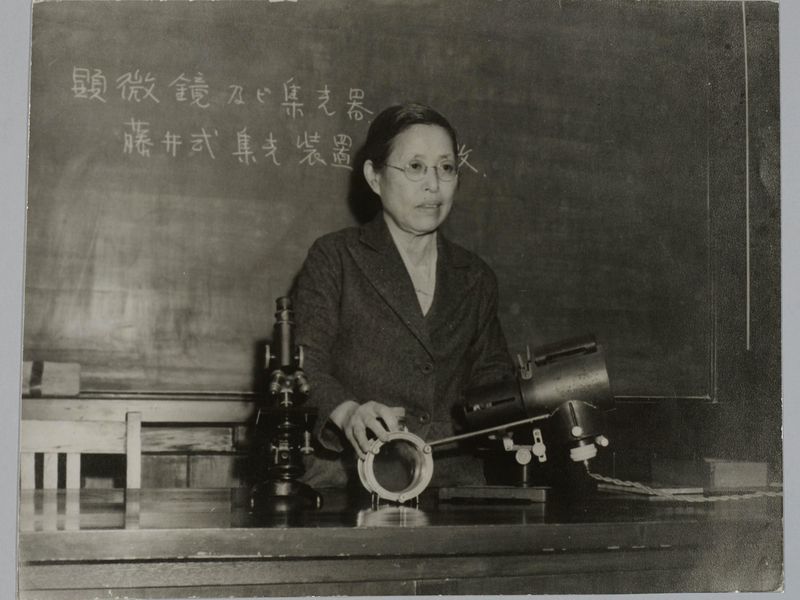
Born in Kagawa Prefecture, Japan in 1880, Kono Yasui grew up in a society built around the ideal of women as wives and mothers, an ideal built into the educational system. Being a girl, Yasui attended girls-only schools where, instead of being taught science, math, and engineering like the boys were, she received training to become a “good wife and mother.” Higher education opportunities for women in Japan were extremely limited, especially at Japan’s elite Imperial Universities where women were barred until 1913.
In contrast with this gender imbalance in broader society, Yasui’s family tried to instill in her a sense of equality. Her parents encouraged her to pursue her passions, even if they conflicted with gender norms. She studied science and math at Tokyo Women’s Higher Normal School (TWHNS) where, before even graduating, she became the first woman to publish a scientific paper in a Japanese journal. She got a position teaching as an assistant professor at TWHNS, but the job lacked support for research, which was one of her main passions. Making the best of what she had available, she began research in plant cytology (the study of plant cells), painstakingly documenting the intricate anatomy of the floating aquatic fern Salvinia natans throughout its life cycle. She published her findings in a British botanical journal in 1911, making her the first Japanese woman to publish in a foreign journal.
Yasui wished to pursue further education but, despite her early accomplishments, she was still not allowed in Japan’s Imperial Universities because of her gender. Therefore, TWHNS petitioned Japan’s Ministry of Education to provide funding for Yasui to study abroad. The Ministry of Education denied the request until a prominent Japanese scientist, Kenjiro Fuji, advocated for her, and the Ministry offered a compromise: they would support Yasui’s overseas education, but only if she 1) added “home economics” to her area of study and 2) agreed never to marry. It is clear from these compromises the deep discomfort and fear the male-dominated society felt with this ambitious female scientist – they simultaneously aimed to neutralize her threat to the feminine ideal by masking her studies with more “acceptable” topics and neutralize her threat to male superiority by making it clear that Yasui was not a “proper” woman.
Despite the sexism, Yasui was able to make a successful career for herself; she studied at the University of Chicago and Radcliffe College, where she began researching coal, a research subject she took back to Japan, where she took back up teaching at TWHNS. Through careful analysis of coal samples, she discovered six ancient plant species and helped unravel the processes by which living plants are transformed into coal. After initially excluding Yasui years ago, Tokyo Imperial University saw their mistake and awarded her a PhD in 1927, even though she wasn’t officially a student. This made her the first Japanese woman to earn a PhD in science, and she helped make sure she would be joined by many others. Together with the second Japanese woman to earn a scientific doctorate, Chika Kuroda, she established the Yasui-Kuroda Scholarship to support women studying natural sciences. Additionally, she helped transform TWHNS into a renowned women’s research university (renamed Ochanomizu University), where she became a research Professor. She studied plant genetics and the effects of nuclear fallout on plants, publishing 99 papers before retiring in 1952.
Photo credit: Ochanomizu University
[sharethis-inline-buttons]
